One should be aware of the momentariness/volatility of social habits. Tools guide you through everyday life, supplying a proper framework, a set of possibilities to help with the guise of worldly interaction. Yet, it is mostly technological invention that has slowly – though nowadays quite quickly – shaped social manners and our way of living. People adapt to new technologies and items, wondering how someone could have lived without them before their invention. The personal freedom we seem to gain, is however owed to hierarchies of corrective authorities we have succumbed too.
Clausen investigates the structures of these dependencies. In his earlier works he took screen shots of software user interfaces, altering images and icons or error signs and combining them to virtual collages that were printed on PVC. By enlarging and isolating these symbols, i.e. the red zick-zack line that appears under misspelled text in wording-programs suddenly takes she shape of a stealth bomber. The subtle aggressiveness of error designs and icons becomes apparent, symbols and commands which we unquestionably digest and take for granted, commencing their instructions.
Continuing this dispersion of hierarchies of systematical authority, uncommented objects and signs, Clausen found interest in the meter measurement. The original meter, invented by scientist and mathematicians in France in the 19th century, was originally defined as a fraction of the earths meridian through Paris. In the following years, it was in fact Napoleon who spread this measurement throughout Europe. The mathematical instrument became a tool of equal communication between countries. Casts of the meter were installed in public to help people get used to it. The definition of the meter is still today ever changing and now even considered a measured unit of time: the fraction of a light-year.
For the exhibition different versions of the meter are placed within the space, made from aluminium, brass or rubber. The meter is used as a reminder of the discrepancy of things we heavily rely on. Ever growing fluid communication comes at the cost of subordination within developments, and is based on a cultural agreement to have them used. The refusal of it, be it the simplicity of the meter or diverse social norms and forms, may lead to the rejection of the revolting subject. Why seek disruption, when everything can flow? Will going with the tide help you to keep up with the inevitable change? Resistance seems futile. Their finés execution speaks of a false safety and evoked cleanliness.
Alongside these metallic bars Anderson brought his latest series of painted feathers. Almost floating, yet tied to to the wall, they are sharing the meters play on materialism. Feathers from different birds are sprayed, galvanized and painted turning into delightful peinture miniatures. Their delicacy contrasts the meters almost dominant phallic presence. But despite their apparent softness, feathers are a tool of sexual seduction for themselves. As it is the male birds which were gifted by nature with their colorful palette to impress females, their beauty is as almost endangering at the same time. Whereas the feathers reflect ones sensibility, the meters stand for analytical logic. It is therefor of Anderson interest to highlight different systems of dominance, bringing together science, human and nature.
Anders Clausen Straight Lines
Mélange 31/03/2016—01/05/2016

Anders Clausen, Untitled (feather aB), 2016, Bird feather, air brush, 32 x 4,5 cm, MÉLANGE 2016
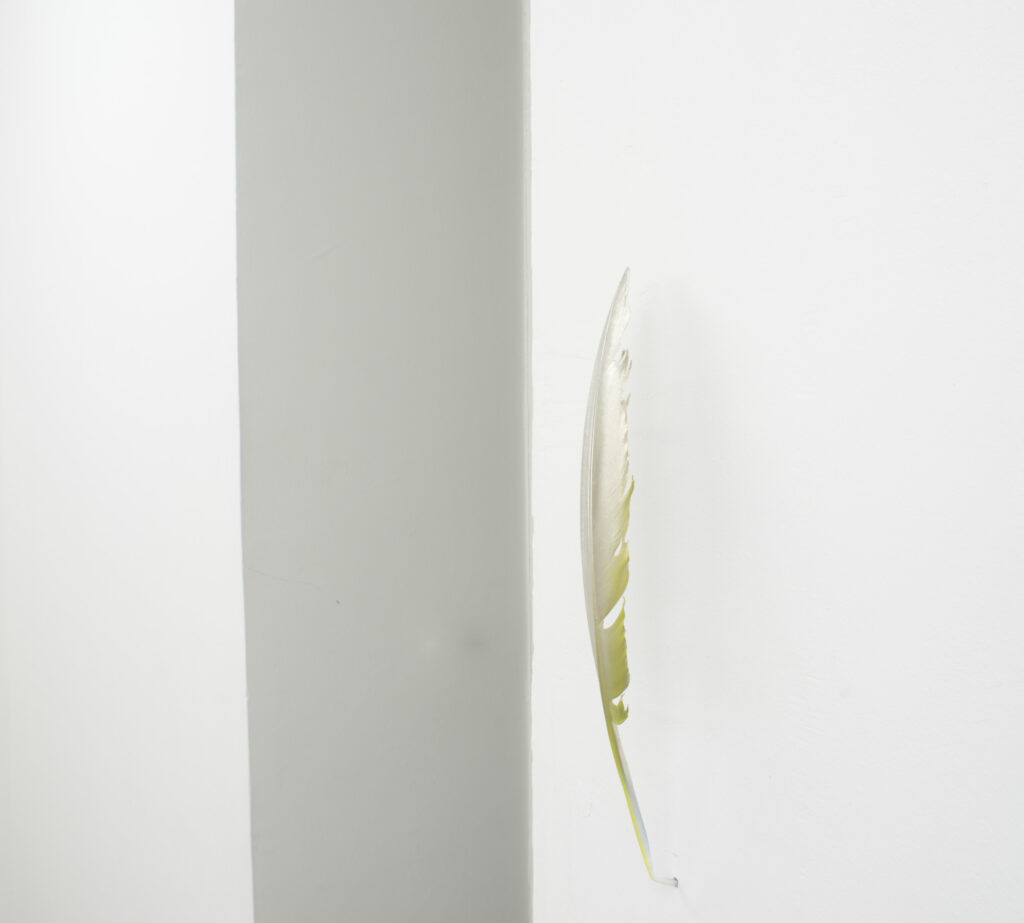
Anders Clausen, Untitled (feather aC), 2016 Scissor cut, nickel galvaniced bird feather, 33 x 4 cm, MÉLANGE 2016
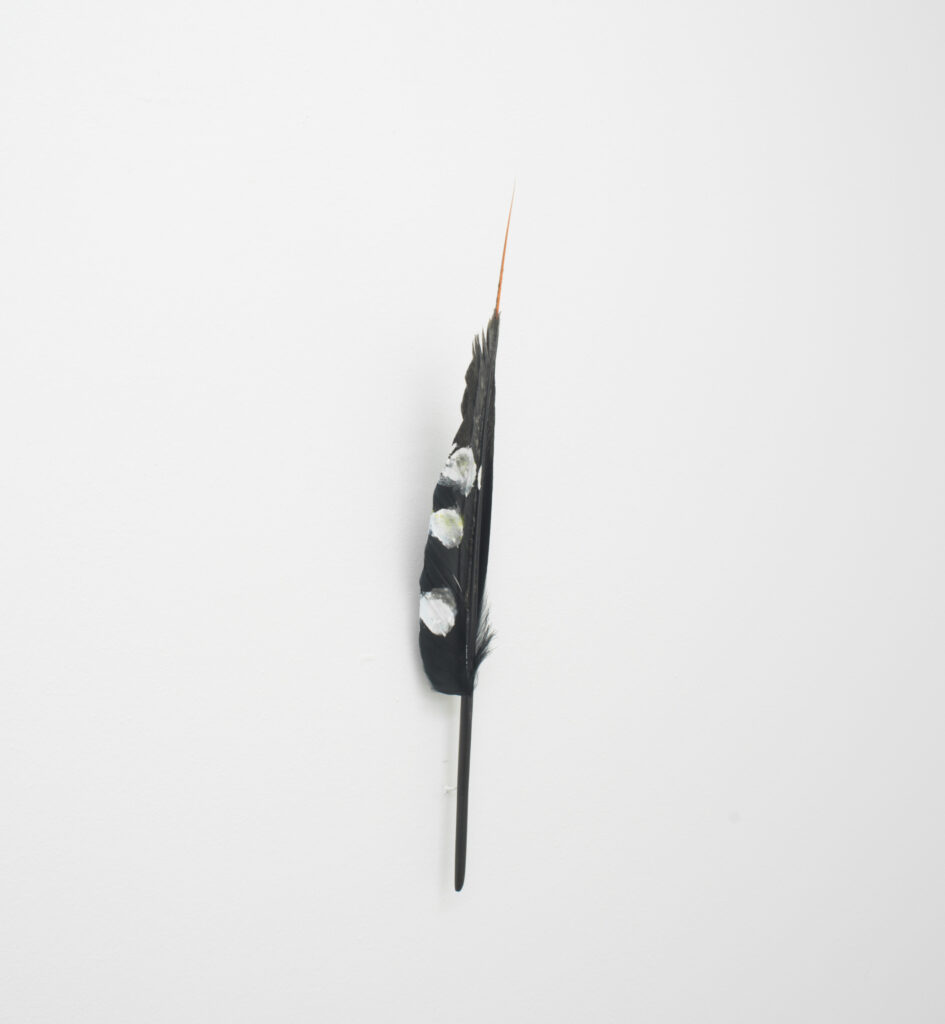
Anders Clausen, Untitled (feather j) 2015 Bird feather, air brush, chlorine bleach, 36 x 4,5 cm, MÉLANGE 2016

Anders Clausen, Untitled (feather d), 2015 Scissor cut , nickel galvaniced bird feather, water transfer print, Kawaski green lacquer, 35 x 5 cm, MÉLANGE 2016

Anders Clausen, Untitled (feather), 2016 Bird feather, water transfer print, 21 x 3,8 cm, MÉLANGE 2016
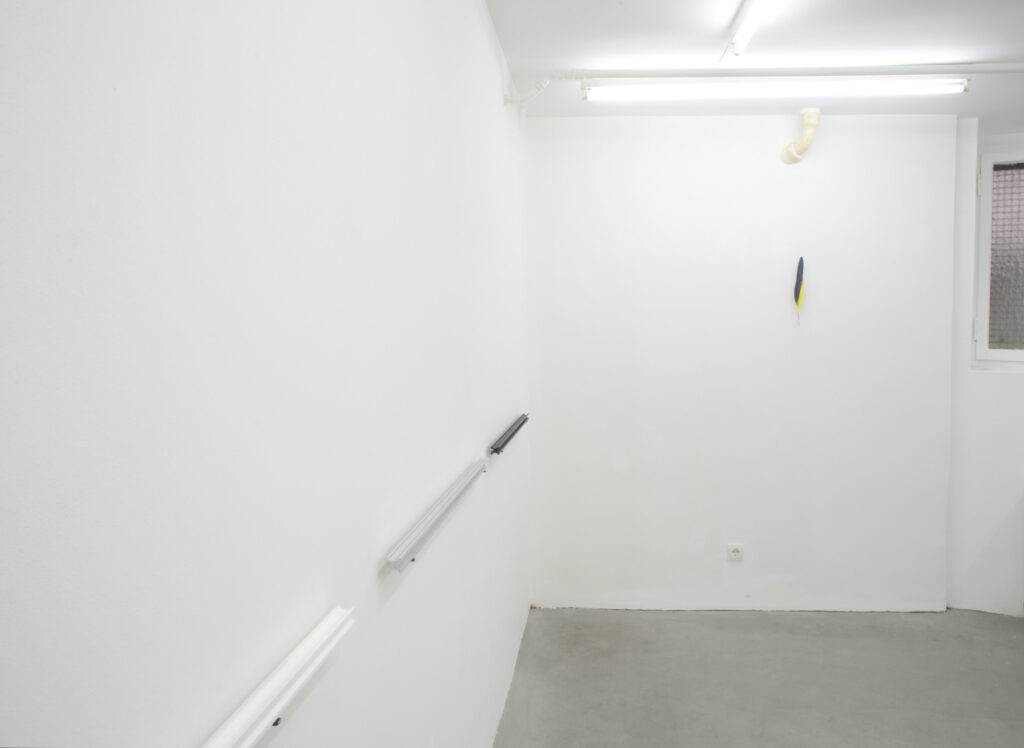
Anders Clausen, installation view, MÉLANGE 2016
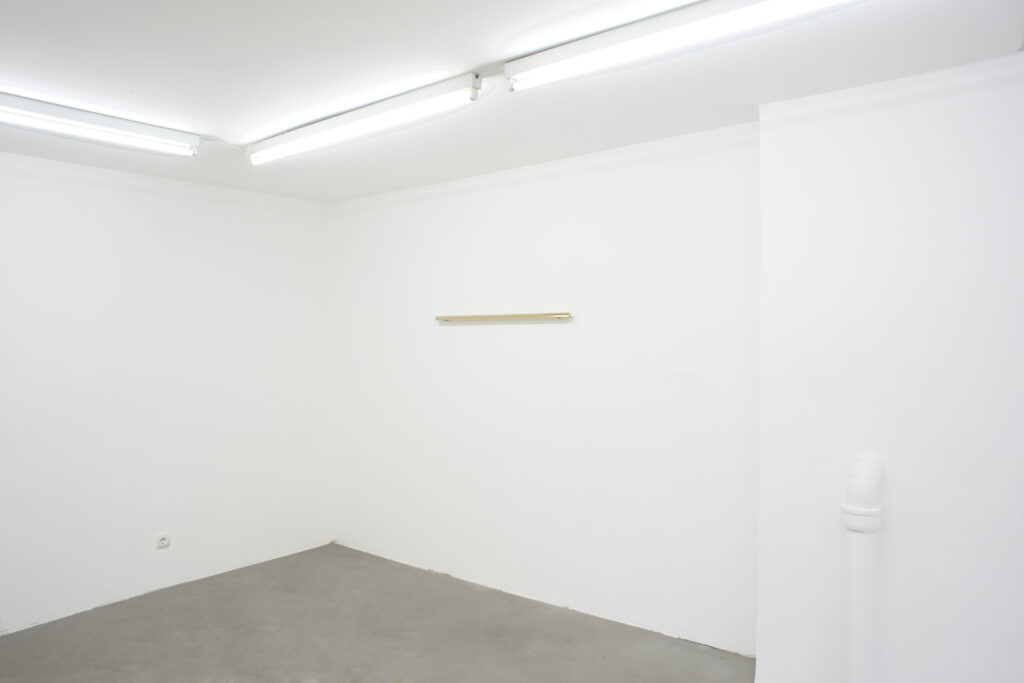
Anders Clausen, Untitled (Urmeter X-Profil), 2015 Brass, 2,5 x 100 x 2,5 cm, MÉLANGE 2016
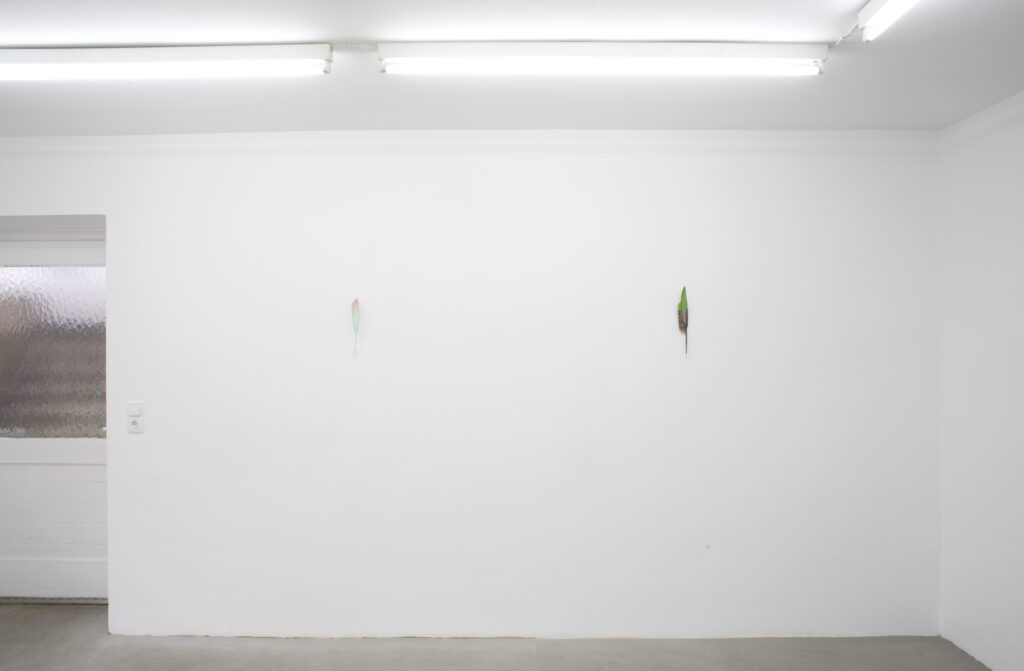
Anders Clausen, installation view, MÉLANGE 2016